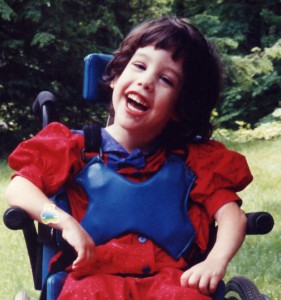 A legacy resource from NICHCY
A legacy resource from NICHCY
Updated, May 2023
Special education is instruction specifically designed to meet the educational and developmental needs of children with disabilities, or those who are experiencing developmental delays.
Services for preschool children (ages 3 through 5) are provided free of charge through the public school system. These services are available through the same law—the Individuals with Disabilities Education Act—that makes available:
- early intervention services (Part C of IDEA), and
- services for school-age children, in grades K through 12 (Part B of IDEA) .
How do children access special education preschool services?
There are several ways that children may begin receiving services. Children who are receiving early intervention services may begin special education preschool services:
- upon their transition out of early intervention, typically at age three;
- or, at the State’s discretion, two-year-olds who will turn three during the school year may receive special education preschool services.
- Still other children are first identified and found eligible between the ages of two and five, and thus, may begin receiving services as preschoolers.
One of the more common ways that very young children become identified as needing special services lies in the process of attending regular well-baby and child check-ups with a pediatrician. Often a referral to a Developmental Pediatrician or other specialist is made if there’s a question or concern about a child’s development. This can, in turn, lead to comprehensive evaluations to fully determine if a child has a significant delay or disability and as a result needs specialized help.
Another way for very young children to become identified is through the local Child Find office. In keeping with IDEA, each State must have comprehensive systems of child find in order to identify, locate, and evaluate children with disabilities residing in the State and who are in need of special education and related services. Before children are old enough to attend public school, however, it’s not uncommon for a babysitter, a daycare provider, or preschool staff to express concern to a child’s parents about a possible developmental or learning delay. They may suggest that the parents contact the appropriate agency to have the child screened and/or evaluated to determine if there is an underlying problem or delay that might need to be addressed. Such screenings cover a range of skill areas—vision and hearing, gross and fine motor skills, speech and language use, social and emotional behavior, and more.
Parents don’t have to wait until someone suggests that their child be screened, though. If you are concerned about your child’s development, you can contact the local child find office (through your local school system) and arrange to have your child screened. Such screenings are free of charge to parents. They are considered part of the State’s responsibility toward the well-being of its resident children.
How can you get connected?
In addition to the assistance that can come when a child is receiving special education services to address a disability or developmental delay, there are also several other resources that can be very helpful to families, childcare providers, and educators. These include:
Support groups (such as Parent-to-Parent) for families of children with disabilities;
Parent training and information (PTI) centers and community parent resource centers (CPRCs) in every state;
Groups concerned with a specific disability, such as United Cerebral Palsy (UCP), the Autism Society of America (ASA), or the Arc;
Division for Early Childhood (DEC) through the Council for Exceptional Children
www.dec-sped.org
National Association for the Education of Young Children (NAEYC)
www.naeyc.org
Early Childhood Technical Assistance Center (ECTA Center)
http://ectacenter.org/
For more information related to moving from early intervention to preschool services, please see Transition to Preschool on our site.
For more on the process and steps involved in special education services, you may want to begin with the 10 Basic Steps in Special Education, then explore the other sections under Children 3-21.

